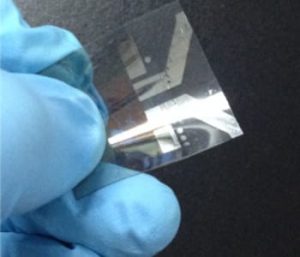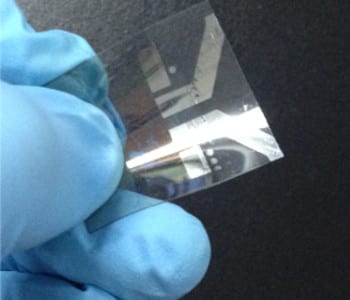 Flexible organic light-emitting diodes are currently gaining in popularity for lighting and display applications, such as wearable full-color displays, foldable touch screens, antennas, and flexible lighting sources. However, for high-performance flexible organic light-emitting diodes, further efficiency optimization is still challenging because of the optical confinement and limited light out-coupling efficiency induced by the mismatched refractive indices of functional media in the devices.
Flexible organic light-emitting diodes are currently gaining in popularity for lighting and display applications, such as wearable full-color displays, foldable touch screens, antennas, and flexible lighting sources. However, for high-performance flexible organic light-emitting diodes, further efficiency optimization is still challenging because of the optical confinement and limited light out-coupling efficiency induced by the mismatched refractive indices of functional media in the devices.
In newly published research, J. X. Tang and co-workers attempt to address this problem by demonstrating a simple and wavelength-independent light extraction scheme using biomimetic quasi-random nanostructures that can simultaneously enhance the out-coupling of the trapped light and allow minimized ohmic losses without color distortion. Compared to traditionally used periodic grating structures, these nanoimprinted quasi-random nanostructures can broaden the periodicity distribution and randomize the emission directionality, leading to superior color stability over the whole visible light range for a large variation of viewing angles. The resulting external quantum efficiency of the patterned device is highly enhanced as compared to that of a conventional flexible organic light-emitting diode. Particularly, their method enables processing compatibility with high-throughput large-area roll-to-flat and roll-to-roll manufacturing techniques for potential future mass production of low-cost organic light-emitting diodes.

















